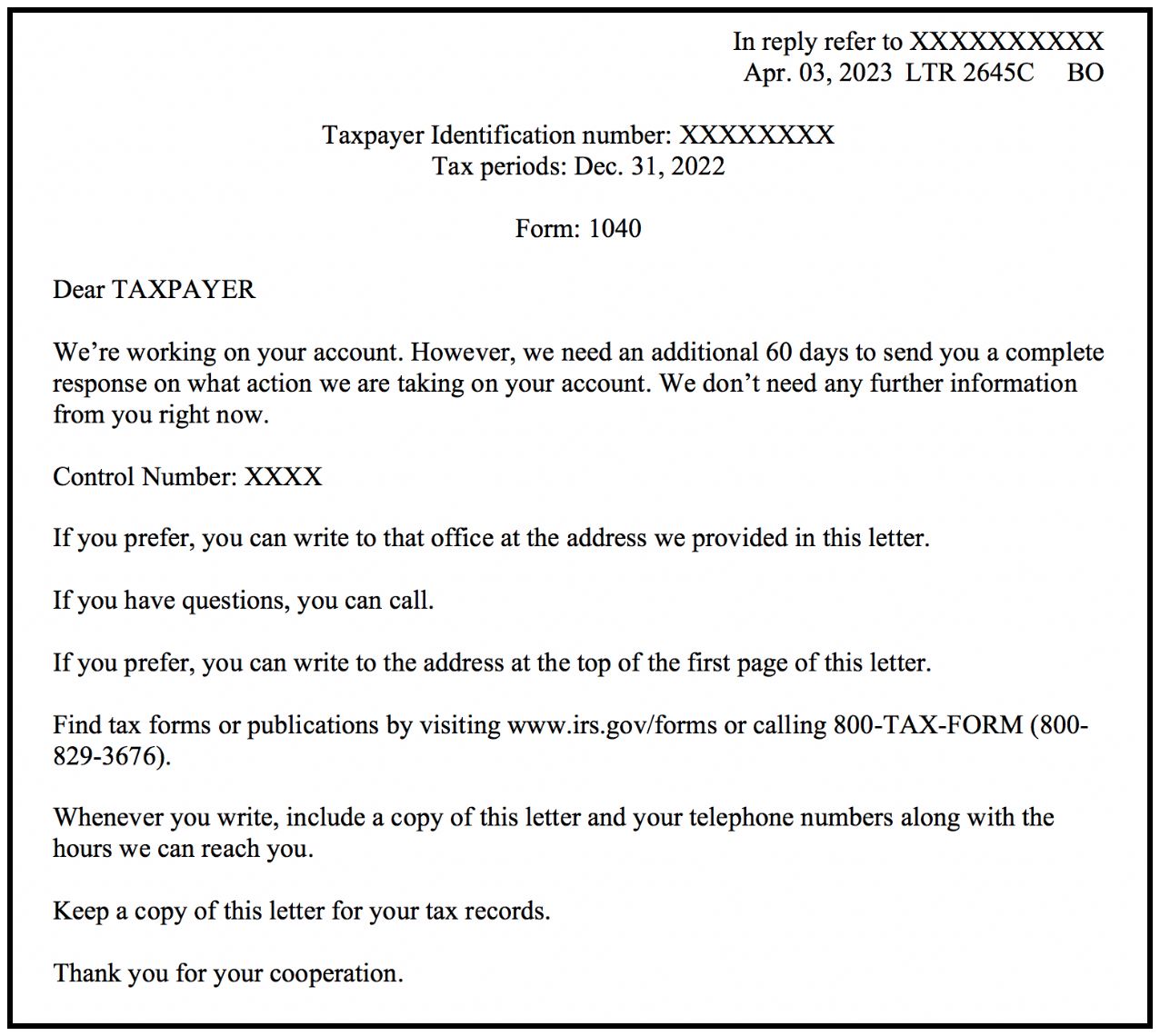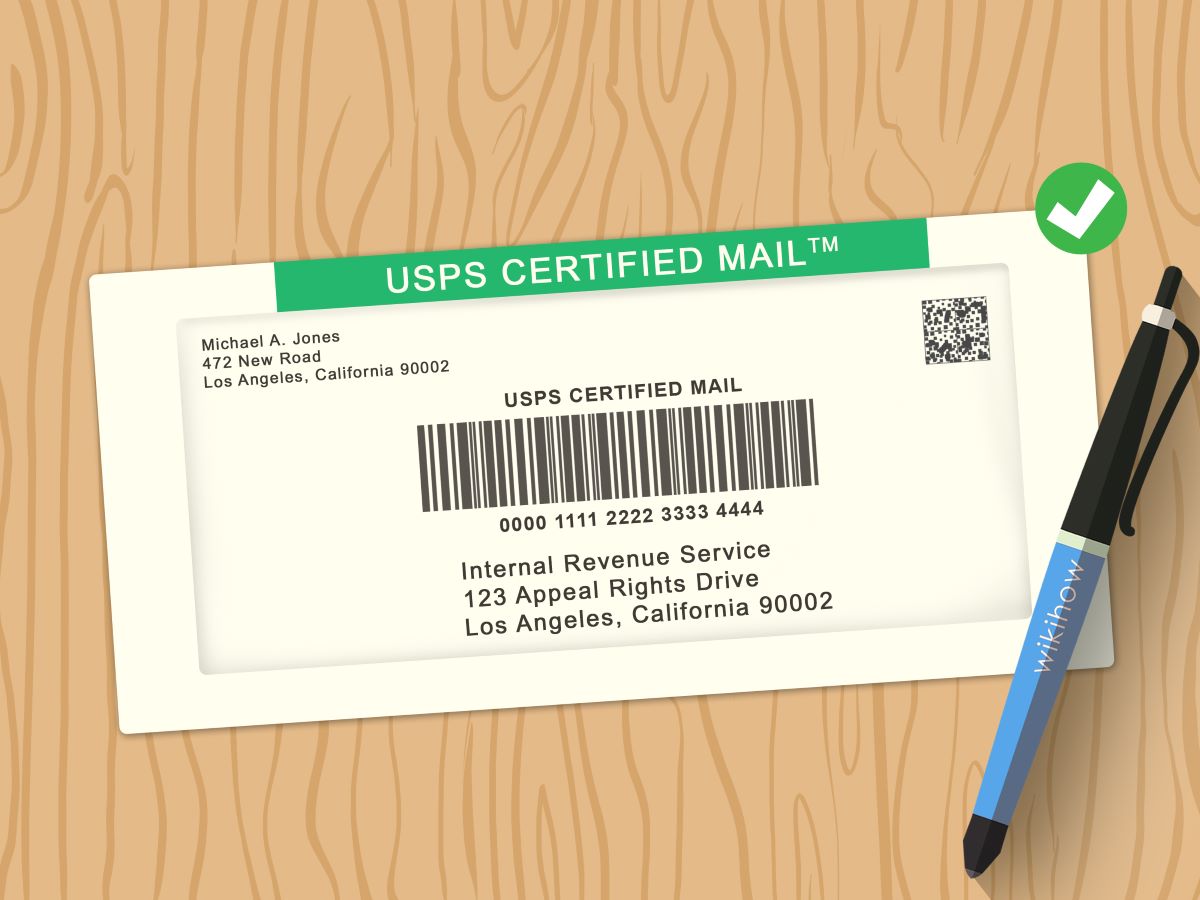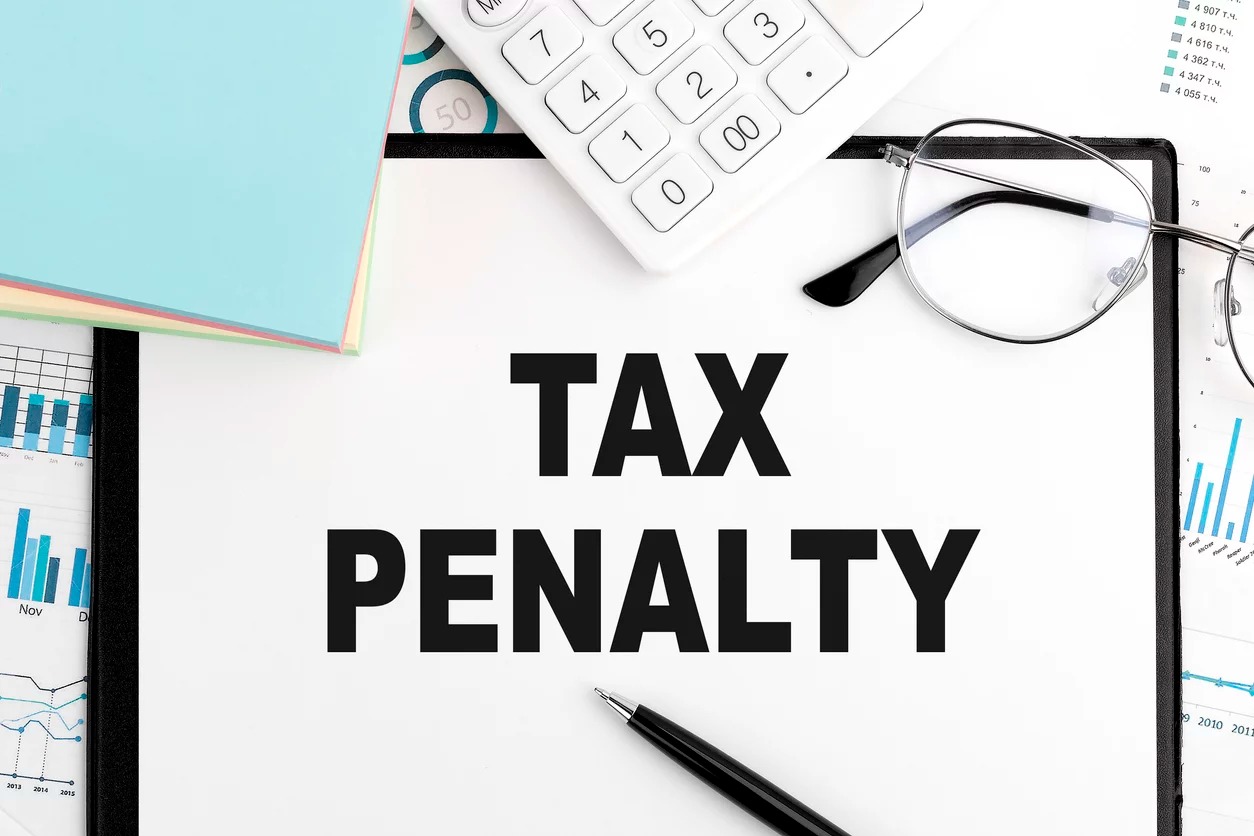Home>Finance>How To Write A Letter To The IRS To Waive Penalty


Finance
How To Write A Letter To The IRS To Waive Penalty
Published: October 31, 2023
Learn how to write a persuasive letter to the IRS to request a waiver of penalties. Save on finance charges and resolve tax disputes effectively.
(Many of the links in this article redirect to a specific reviewed product. Your purchase of these products through affiliate links helps to generate commission for LiveWell, at no extra cost. Learn more)
Table of Contents
Introduction
Dealing with the Internal Revenue Service (IRS) can be a daunting task, especially when faced with penalties for late filing, underpayment, or other tax discrepancies. These penalties can result in significant financial burdens and may seem overwhelming to resolve. However, the IRS does provide an opportunity for taxpayers to request a penalty waiver.
In this article, we will explore how to write a letter to the IRS to request a penalty waiver. We will discuss the importance of understanding IRS penalties, reasons for requesting a waiver, gathering the necessary documentation, and structuring a persuasive letter. Additionally, we will provide a sample letter to serve as a guide.
It is important to note that requesting a penalty waiver does not guarantee that the IRS will grant your request. However, by following the steps outlined in this article and presenting a well-prepared and compelling case, you can increase your chances of a favorable outcome.
Before diving into the process of writing a letter to the IRS, let’s take a closer look at the different types of penalties that individuals and businesses may face.
Understanding IRS Penalties
IRS penalties are charges imposed on taxpayers for various violations of tax laws. These penalties are designed to encourage compliance and deter individuals and businesses from underreporting or underpaying their taxes. Understanding the different types of penalties is crucial when requesting a waiver from the IRS.
Here are some common IRS penalties:
- Late Filing Penalty: This penalty is imposed when an individual or business fails to file their tax return by the designated due date. The penalty is based on a percentage of the unpaid tax amount and increases the longer the return goes unfiled.
- Late Payment Penalty: If you fail to pay your tax liability by the due date, the IRS will charge you a late payment penalty. This penalty is also calculated as a percentage of the unpaid tax amount.
- Accuracy-Related Penalty: If the IRS determines that you have made significant errors or inaccuracies on your tax return, they may assess an accuracy-related penalty. This penalty is typically 20% of the underpaid tax.
- Underpayment Penalty: When you underpay your estimated tax payments throughout the year or fail to pay enough tax withholding, the IRS may impose an underpayment penalty. The amount of the penalty varies based on the underpayment amount and the interest rate for the period.
- Negligence or Fraud Penalty: In cases of intentional fraud or willful neglect, the IRS can assess penalties of up to 75% of the underpaid tax amount. These penalties are severe and may also result in criminal charges.
It is essential to understand the specific penalty you are facing as well as the underlying reasons for the penalty. This knowledge will help you craft a persuasive argument in your letter requesting a penalty waiver.
Reasons for Requesting Penalty Waiver
When writing a letter to the IRS to request a penalty waiver, it is crucial to provide valid and compelling reasons for your request. The IRS considers various factors when deciding whether to grant a penalty waiver, so it is essential to present a strong case. Here are some common reasons that may warrant a penalty waiver:
- Reasonable Cause: If you can demonstrate that you had a valid reason for the delay or error, such as a natural disaster, serious illness, or death in the family, the IRS may consider waiving the penalty. Be sure to provide supporting documentation, like medical records or insurance claims, to strengthen your case.
- First-Time Offense: If you have a history of timely filing and prompt payment, but this is your first time incurring a penalty, the IRS may grant a waiver as a one-time courtesy. Emphasize your compliance history and illustrate that the violation is an isolated incident.
- Incorrect IRS Advice: If you can prove that you received incorrect advice from an IRS representative, which led to the error or non-compliance, you may have grounds for a penalty waiver. Include any correspondence or documentation that supports your claim.
- Lack of Awareness or Ignorance: If you can show that you were genuinely unaware of your tax obligations or the specific requirements that led to the penalty, the IRS may consider waiving the penalty. However, ignorance of the law is generally not a valid reason, so be sure to provide sufficient evidence of your efforts to educate yourself and rectify the situation.
- Financial Hardship: If paying the penalty would cause significant financial hardship, you can make a case for a waiver based on your inability to pay. Provide documentation such as bank statements, income records, and expense details to demonstrate that the penalty would place an undue burden on your finances.
It is important to be honest and forthright in your letter, clearly explaining the circumstances that led to the penalty and why you believe a waiver is warranted. Additionally, supporting your reasons with relevant documentation and evidence can strengthen your case and improve your chances of a successful outcome.
Gathering Documentation and Information
When writing a letter to the IRS to request a penalty waiver, it is crucial to gather all the necessary documentation and information to support your case. Providing this evidence will enhance the credibility of your request and increase your chances of a favorable outcome. Here are some key documents and information to gather:
- Tax Return and Notices: Gather copies of the relevant tax returns, including any notices or correspondence from the IRS regarding the penalties. This will help you understand the specific violations and demonstrate your willingness to address the issue.
- Social Security Numbers and Identification: Include your full name, address, Social Security number, and any other identification numbers required by the IRS. This ensures that your request is properly linked to your tax account.
- Reason for Penalty: Clearly identify the reason for the penalty and provide a brief explanation of the circumstances that led to the violation. Be concise and focus on the most pertinent details.
- Supporting Documents: Collect any supporting documentation that validates your reasons for requesting a penalty waiver. This may include medical records, insurance claims, legal documents, or other relevant paperwork. Ensure that these documents are organized and easily accessible to include with your letter.
- Compliance History: If you have a good compliance history with previous tax filings and payments, gather evidence to support this. Include copies of prior years’ tax returns, payment receipts, or any other records that demonstrate your consistent compliance as a responsible taxpayer.
- Financial Statements: If you are requesting a waiver based on financial hardship, gather relevant financial statements, such as bank statements, income records, and expense details. These documents will substantiate your claim and illustrate your inability to pay the penalty.
- IRS Correspondence: If you have any previous correspondence with the IRS regarding the penalties in question, include copies of these documents in your submission. This will show that you have been actively addressing the issues and are committed to resolving the matter.
Remember to organize and label all documents appropriately, providing a clear and concise explanation of each piece of evidence. Doing so will help the IRS review your case efficiently and make an informed decision regarding your penalty waiver request.
Writing the Letter
When writing a letter to the IRS to request a penalty waiver, it is important to be clear, concise, and persuasive. The letter serves as your opportunity to explain your circumstances, provide supporting evidence, and make a compelling case for a penalty waiver. Here are some tips to consider when writing your letter:
- Use a Professional Tone: Maintain a professional tone throughout the letter. Be respectful and avoid using overly emotional language or making accusatory statements.
- Address the Letter Correctly: Begin the letter with the appropriate IRS address and salutation, using the correct format for business or individual taxpayers.
- State the Purpose of the Letter: Clearly state the purpose of your letter in the opening paragraph. Mention that you are requesting a penalty waiver and provide a brief overview of the circumstances that led to the penalties.
- Explain Your Reasons and Provide Evidence: In the following paragraphs, explain in detail the reasons why you are requesting a penalty waiver. Reference the specific penalty type and provide supporting evidence, such as medical records, financial statements, or documentation of incorrect IRS advice.
- Take Responsibility: Acknowledge any mistakes or errors that occurred, and accept responsibility for them. Demonstrating accountability can help build trust with the IRS.
- Highlight Your Compliance History: If you have a good compliance history with prior tax filings and payments, emphasize this in your letter. Mention any previous years where you had no penalties and a strong track record of timely compliance.
- Conclude with a Strong Request: In the closing paragraph, clearly state your request for a penalty waiver. Be direct and include any additional information or documentation you are submitting with the letter.
- Express Gratitude: Close the letter by expressing appreciation for the IRS’s consideration of your request. Thank them for their time and attention to your matter.
Remember to proofread your letter before submitting it to ensure accuracy, clarity, and professionalism. Be sure to include your contact information in case the IRS needs to reach you for further clarification or documentation.
With a well-crafted and persuasive letter, you increase your chances of success in obtaining a penalty waiver from the IRS.
Formatting and Structure
When writing a letter to the IRS to request a penalty waiver, it is important to follow a proper formatting and structure to ensure clarity and professionalism. Here are some guidelines to consider:
- Use a Formal Business Letter Format: Begin your letter with your name, address, and contact information. Include the date and address of the appropriate IRS office. Use a professional font and align your text to the left-hand side.
- Include a Clear and Concise Subject Line: Write a subject line that clearly states the purpose of your letter, such as “Request for Penalty Waiver.”
- Use Proper Salutation: Address the recipient with the appropriate salutation, such as “Dear IRS Representative” or “To Whom It May Concern.”
- Organize the Letter into Paragraphs: Divide your letter into paragraphs for better readability. Each paragraph should focus on a specific point or reason for requesting the penalty waiver.
- Use a Formal Tone: Maintain a professional and respectful tone throughout the letter. Be polite and avoid using slang or casual language.
- Be Concise and to the Point: Keep your letter clear, concise, and focused. Avoid unnecessary details or lengthy explanations.
- Provide Supporting Evidence: When mentioning specific reasons for your penalty waiver request, provide supporting documentation. Reference these documents in your letter or include them as attachments.
- Use Proper Closing and Signature: End your letter with a formal closing, such as “Sincerely” or “Respectfully.” Sign your name below the closing, and consider including your typed name and contact information for clarity.
Remember, your letter should be well-structured and easy to read. Use paragraphs, bullet points, or numbered lists where appropriate to enhance readability. Use proper grammar, punctuation, and spelling throughout the letter.
Following these formatting and structure guidelines will ensure that your letter appears professional and increases the likelihood of a positive response from the IRS.
Sample Letter to the IRS for Penalty Waiver
[Your Name]
[Your Address]
[City, State, Zip Code]
[Date]
[IRS Office Address]
[City, State, Zip Code]
Subject: Request for Penalty Waiver
Dear [IRS Representative or To Whom It May Concern],
I am writing this letter to request a waiver of the penalties imposed on my [tax return/underpayment/etc.] for the tax year [tax year]. I understand the seriousness of the penalty, and I sincerely apologize for the oversight that led to the non-compliance.
The reason for my request is [provide a brief explanation of the circumstances that led to the penalty]. [If applicable, mention any supporting documentation or evidence that supports your claim, such as medical records or incorrect IRS advice]. Additionally, I would like to highlight the following factors that I believe warrant a penalty waiver:
- [Reason 1]
- [Reason 2]
- [Reason 3]
Furthermore, I would like to emphasize my compliance history as a responsible taxpayer. In the past [number of years], I have consistently filed my tax returns accurately and in a timely manner. This penalty is an isolated incident, and I am committed to rectifying the situation immediately.
Enclosed with this letter, you will find the necessary supporting documents that substantiate my reasons for requesting the penalty waiver. These documents include [list supporting documents].
I understand that the IRS carefully considers penalty waiver requests, and I genuinely appreciate your time and attention to this matter. If there is any additional information or documentation required, please do not hesitate to contact me at [phone number] or [email address].
Thank you for your consideration of my request. I am confident that, given the circumstances and supporting evidence provided, the IRS will grant me a penalty waiver.
Sincerely,
[Your Name]
[Typed Name]
Enclosure: [List of supporting documents]
[Contact Information]
Note: This sample letter is for illustration purposes only. It is important to personalize the letter and tailor it to your specific circumstances and reasons for requesting a penalty waiver.
Conclusion
Writing a letter to the IRS to request a penalty waiver can be a challenging process, but by following the guidelines outlined in this article, you can increase your chances of success. Understanding the different types of IRS penalties, gathering the necessary documentation, and presenting a well-structured and persuasive letter are key to making a compelling case.
Remember to clearly state the purpose of your letter and explain the reasons for your penalty waiver request. Be honest, take responsibility for any mistakes, and provide supporting evidence to strengthen your case. Additionally, maintain a professional and respectful tone throughout the letter, and proofread for grammar, punctuation, and clarity.
While there is no guarantee that the IRS will grant your request, by presenting a strong case and demonstrating valid reasons for the penalty waiver, you improve your chances of a positive outcome. Be patient and diligent in your communications with the IRS, and be prepared to provide any additional documentation or information if requested.
We hope that this article has provided you with valuable insights on how to write a letter to the IRS to request a penalty waiver. Remember to tailor the letter to your specific circumstances and personalize it accordingly. With thorough preparation and a well-constructed letter, you can navigate the process with confidence and potentially achieve a successful resolution to your penalty issue.














